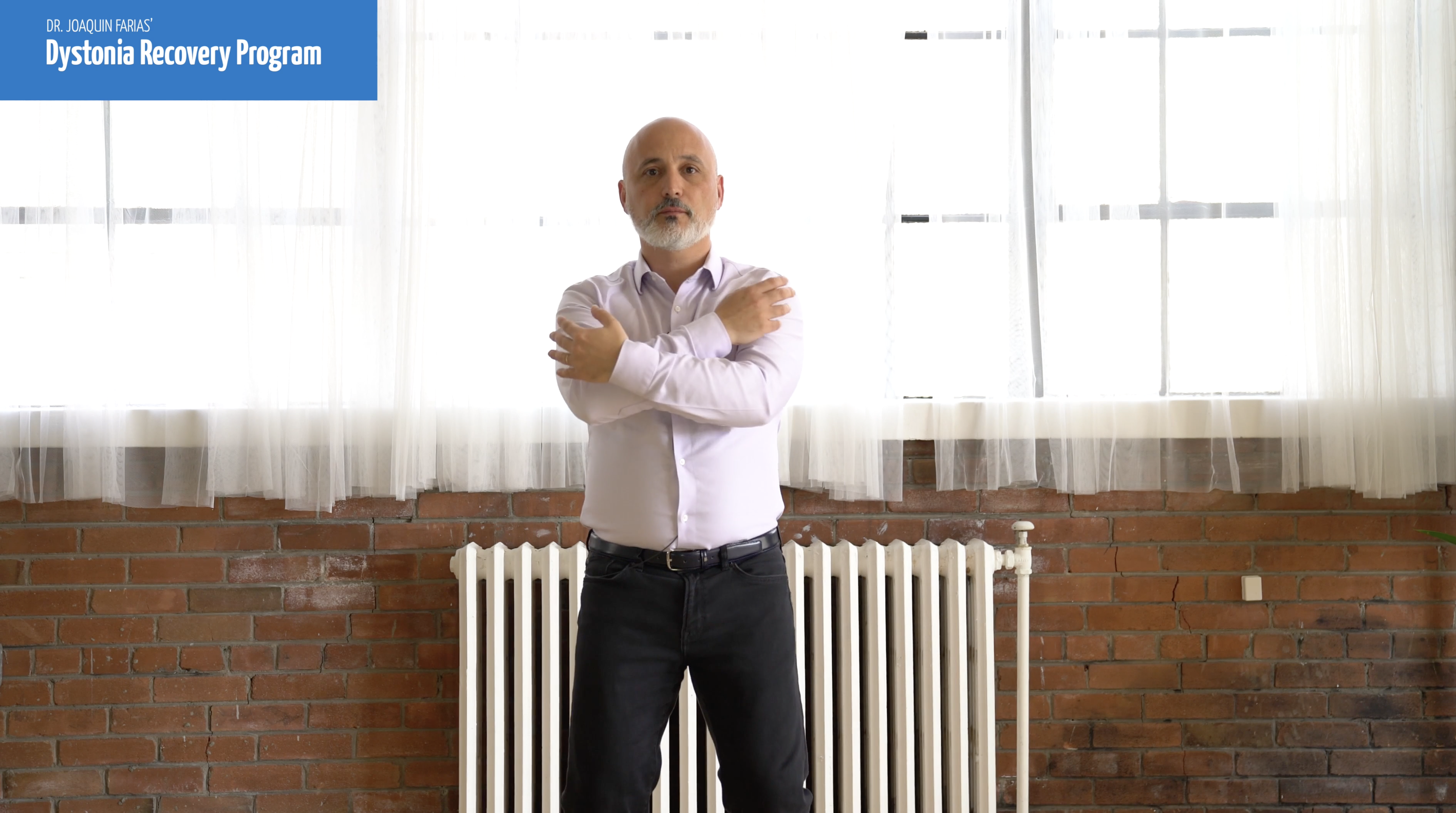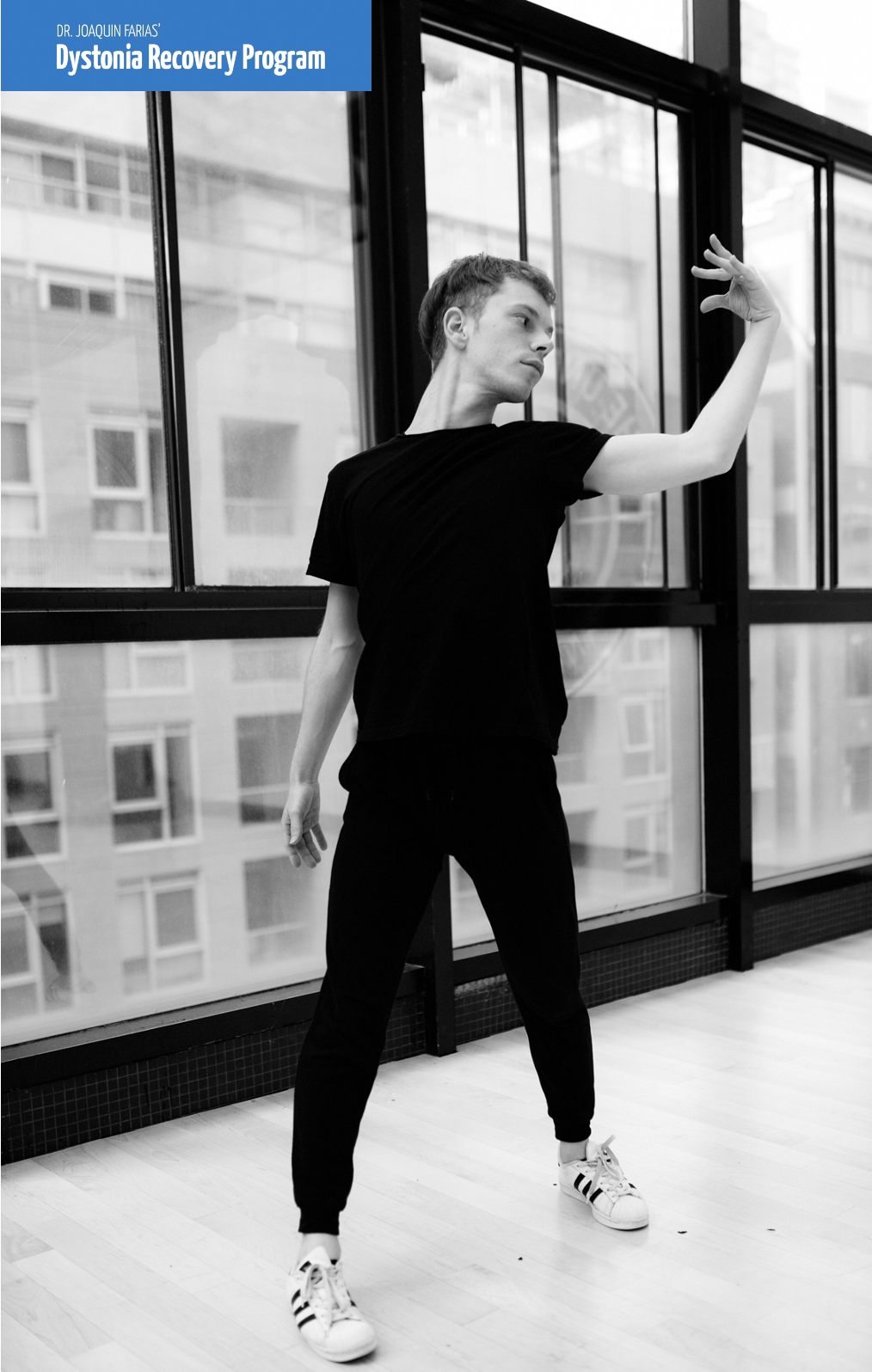For those living with Spasmodic Dysphonia (Laryngeal Dystonia), improving quality of life involves diverse treatments, including tailored natural approaches. Medical options like medications, botulinum neurotoxin injections, and surgery vary in effectiveness.
Challenges arise as some patients find limited benefits from traditional treatments due to preferences for noninvasive methods, concerns about side effects, botulinum toxin resistance, or allergies. Research into alternatives, such as Neuroplasticity exercises and meditation, offers hope.
Drawing from 25 years of experience assisting hundreds of Spasmodic Dysphonia patients, Dr. Joaquin Farias took a significant step by creating an integrative complementary rehabilitation protocol for Spasmodic Dysphonia, available online through the Dystonia Recovery Program. This initiative, developed in collaboration with a dedicated group of health providers (also affected by Dystonia), offers a natural and accessible means for many patients worldwide to manage their symptoms efficiently.
About Dr. Farias Neuroplastic Training Approach
Since 1996, Dr. Farias has been providing effective alternative treatments for patients affected by Dystonia by pioneering new theories on Neuroplasticity induced by movement.
Dr. Joaquin Farias is a leading specialist treating Dystonia with movement therapy. His personal mission is to enable every patient to be offered the least aggressive and most effective treatment available. Since 1996 Dr. Farias has helped thousands of people to have their lives and livelihoods back after being affected by Dystonia. Dr. Farias has presented his work on Dystonia rehabilitation at Harvard Medical School, McGill University Faculty of Medicine, University of Toronto Rehabilitation Sciences Institute, Tokyo University, Toronto Western Hospital, Universidad La Sapienza di Roma and The European Union.
“Dr. Farias is a kind of clinical genius in his work with the Dystonias. I believe, as time evolves, it will be clear that his work is of historical importance.”
— Dr. Norman Doidge M.D.
Author of The brain that changes itself and The brain’s ways of healing
In 2018, Dr. Farias extended his impact through the creation of the Dystonia Recovery online program, making his alternative protocols for Dysphonia rehabilitation accessible to anyone in need.
Will Dr. Farias’ Recovery Program help my Spasmodic Dysphonia?
Since 2018, more than 8,000 Dystonia patients worldwide have created accounts in our program. We are pleased to report that many of our users affected by Spasmodic Dysphonia, who have diligently followed the program for a year or more, have experienced a reduction in their symptoms, including reduced vocal strain, improved vocal function, enhanced vocal control, and increased quality of life.Some of our members consider that they have attained full recovery after a year of practice, while others have continued their training for several years, gradually reducing their symptoms and improving their health and quality of life.
Start your Recovery Journey Today
Join the complete online recovery program for dystonia patients.
How Neuroplasticity can help you recover from Spasmodic Dysphonia
Understanding Neuroplasticity is crucial in Spasmodic Dysphonia therapies, enabling the repair of cortical and subcortical circuits, integrating alternative areas for modified functions, and aiding recovery from brain injuries. Neuroplasticity, the brain’s ability to adapt, is pivotal for cognitive and physical well-being. Dr.Farias’ Neuroplastic Training uses simple movements to optimise vital brain circuits making it possible to recover from Spasmodic Dysphonia. Patients following our training protocols have experienced unprecedented improvements and full recoveries from Spasmodic Dysphonia.
In Spasmodic Dysphonia treatment, acknowledging the brain’s capacity to modify itself is key. The cerebral cortex, genetically predetermined for specific functions, can be modulated through experience and learning.
Physiological plasticity involves changes allowing the recovery of affected functions. This includes creating new synapses, functional reorganization, incorporating new areas into established networks, and recruiting different regions to compensate for losses. The brain adapts through mechanisms like dendrite sprouting, functional reorganization, and activating redundant pathways.
Example of improvement produced by following Dr. Farias’ Recovery program for Spasmodic Dysphonia:
Before following Dr. Farias’ Neuro-Rehabilitation protocol:
After following Dr. Farias’ Neuro-Rehabilitation protocol:
Patients’ Videos
Patients following our training protocols have achieved unprecedented improvements and full recoveries from Spasmodic Dysphonia.
Join our community!
“The gift of knowledge is beyond words. The gift of knowledge that is unknown to all but one, can be as precious as life itself. As a sufferer of spasmodic dysphonia, knowledge that Dr Joaquin Farias shared with me was key to literally returning life that was once stolen from me. With all my heart, thank you for helping me to speak again, Dr Farias.”
– Tyler Carson, USA
How the Recovery Process for Spasmodic Dysphonia Work
At the heart of our program is a holistic brain retraining-rehabilitation approach, carefully designed by Dr. Farias to optimise your journey toward overcoming Spasmodic Dysphonia.
Understanding the Protocol
In the realm of Spasmodic Dysphonia (SD), also known as Laryngeal Dystonia, traditional treatment has primarily focused on muscle-targeted approaches through conventional voice therapy. However, these methods often fell short of achieving the expected outcomes. It’s crucial to recognize that SD is not merely a muscular issue; it is a complex neurological condition characterized by an intricate interplay of neurological factors. This is where Dr. Farias’ groundbreaking neuroplasticity-based neuro-rehabilitation for SD comes into play.
Dr. Farias’ innovative approach aims to rehabilitate the underperforming neural networks at the core of this condition. It addresses both vocal and non-vocal symptoms comprehensively. Through a series of progressive exercises, this method works to retune neural function and normalize the intricate processes involved in speech production. The results have been nothing short of unprecedented, offering new hope and tangible improvements for those living with SD.
Spasmodic Dysphonia, like all Dystonias, is a complex condition that requires a multifaceted strategy for optimal results. Our program is based on Dr. Farias’ 30 years research on how to help patients affected by Dystonia. The protocol incorporates a range of exercises and activities, including Neuroplasticity-based exercises to train the brain pathways affected by Dysphonia to improve its function. The program is complemented with incorporates a range of other exercises and activities specifically designed to cater the needs of Spasmodic Dysphonia patients, including Taiji, meditation, eye exercises, sensory stimulation, breathing exercises, dance, and relaxation techniques. While it might seem overwhelming at first, rest assured that each element has been carefully selected to contribute to your holistic recovery.
Understanding Voice Rehabilitation for Spasmodic Dysphonia:
Voice exercises are a fundamental component in managing this challenging voice disorder. These exercises are specifically designed to tackle the vocal challenges associated with SD and help individuals regain control over their voice. Whether you have abductor or adductor SD, these voice exercises can be tailored to meet your unique needs. They focus on improving vocal function, reducing vocal strain, and enhancing vocal control, ultimately contributing to an improved quality of life. Through regular practice and guidance, these exercises can effectively minimise SD symptoms and enhance overall vocal health.
Strategies for Abductor SD:
If you’re dealing with abductor SD, you’ll be guided in transitioning from voiceless sounds to voiced ones and articulating sounds for easier speech. These techniques empower you to regain control over your voice.
Strategies for Adductor SD:
For those facing Adductor SD, strategies are employed to produce smoother airflow, reducing tension and strain during speaking, which leads to more comfortable and effective communication.
Key Benefits of Dr. Farias’ Dystonia Recovery Program:
- Reduced vocal strain
- Improved vocal function
- Enhanced vocal control
- Increased quality of life
Dr. Farias’ Spasmodic Dysphonia Recovery Program:
Dr. Farias has developed a comprehensive set of exercises that have assisted many in improving voice quality and reducing spasm frequency and severity. These exercises encompass a range of techniques, including breathing exercises, vocal warm-ups, voice resonance exercises, articulation exercises, fluency exercises, and non-voice-related brain training. The brain training component involves eye tracking exercises, sensory stimulation exercises, relaxation, meditation, music, and sound therapy, all designed to enhance your brain, auditory, and vocal function.
Getting Started: Step by Step
- Educational Foundation: Start by immersing yourself in Dr. Farias’s enlightening classes within the Education Course. This foundational step provides essential insights into the science behind our approach and how you can help yourself practicing simple movements every day.
- Customized Training Protocols: Our rehabilitation protocols for Spasmodic Dysphonia include Dr. Farias’ voice Exercises and oromandibular Exercises in conjunction with the general protocol which incorporates Dance, Breathing Exercises, Advanced Breathing Techniques, Relaxation, Meditation, Sensory Stimulation, and Nutrition.
- Voice exercises: Dr. Farias advises a gradual approach, starting with very simple to follow exercises and building up to a variety of exercises to balance your body, from core to neck, tongue, lips diaphragm and face free your voice from restrictions. Simple motions when practiced regularly can induce neuroplasticity changing the structure and function of your brain. All exercises are designed to be practiced in a gentle manner within your comfort range.
- Organizing Your Daily Schedule: Allocate at least 45 minutes a day for exercises—15 minutes for breathing exercises, 10 minutes for voice exercises, 10 minutes for face, tongue and lips exercises, 5 minutes for eye exercises, and 5 minutes for sensory stimulation. Tailor your routine to fit your needs.
- Dance Therapy: Incorporate dance into your daily routine, selecting from various choreographies designed to address different muscular blockages present in your body due to Dysphonia. Dance not only offers physical benefits but also transforms the therapeutic experience.
- Relaxation Techniques: Dedicate time to the Relaxation Course, choosing from Music Therapy, Taiji, Yoga, Hypnosis, Meditation, or Kung Fu forms. The calming effects of these practices contribute to your overall recovery.
Personalised Progression and Personal Assistance
Remember, recovery is a gradual process, and you’re encouraged to progress at your own pace. The platform offers a supportive community, where you can engage in the comments section and community forum. Here, Dr. Farias’ and his trained staff are ready to address your questions and provide guidance when you need it the most. We are here to help you.
Nutrition
The Dysphonia Nutrition program aims to guide patients in making informed dietary choices for reducing inflammation, enhancing digestion, and promoting overall well-being. Within this nutrition program, participants will gain access to meal plans and educational videos. These videos will explore straightforward methods to adjust current eating habits, setting the foundation for a healthier lifestyle. While we acknowledge that there isn’t a one-size-fits-all “diet” for individuals with Dysphonia, the provided recipes offer flexibility to accommodate diverse nutritional needs. All recipes include options for gluten-free and dairy-free alternatives. Although not specifically tailored to Paleo, vegetarian, or vegan diets, you are encouraged to adapt them to align with your preferred eating style while making sure to reduce the intake of foods to avoid when you are affected by Dysphonia.
Emotional Wellbeing
Acknowledging that Dysphonia impacts key brain regions responsible for movement, emotion, behaviour, and cognitive processing, Dr. Farias’ program embraces a holistic approach that recognises the emergence of affective-emotional challenges alongside motor symptoms.
Patients grappling with Dysphonia often experience a range of emotions such as constant sadness, loneliness, and emotional blocks due to a prefrontal deficit. This deficit contributes to a notable prevalence of depression and other emotional disturbances.
Dr. Farias’ program embraces the concept of stress-symptom feedback loops and emphasises the need to disrupt this cycle. Interventions like exercises, relaxation techniques, and addressing emotional stress are recommended to concurrently improve both movement and emotional symptoms.
Dr. Farias’ program underscores the inseparable link between psychological elements and the therapeutic process, offering a sense of hope for a more positive future. Our emphasises the importance of compassionate management of both movement and emotional aspects throughout the journey towards Dysphonia recovery.
Dancing Movement Therapy
Dr. Farias’ recovery program underscores the therapeutic potential of dance and movement for individuals with Dysphonia. By embedding therapeutic movements within exercises and dance routines, the aim is to address movement irregularities associated with Dysphonia. The program emphasises the positive impact of engaging in enjoyable activities, like dancing, on neural circuitry. Professional dance instructors on the platform, some affected by Dysphonia themselves, curate choreographies designed to be therapeutic yet accommodating physical restrictions. Dance and movement can be medicine for patients affected by Dysphonia, providing a positive reinforcement and strengthening the weakened neural circuitry affected by the condition.
Your Journey Begins Now
Embark on your journey to recovery by signing up for the Dysphonia Recovery Program. Watch the videos regularly, design your personalised training program, and actively participate in the community. Together, we’ll unlock the door to a future free from the constraints of Spasmodic Dysphonia.
Start your Recovery Journey Today
Join the complete online recovery program for dystonia patients.
Spasmodic Dysphonia Patients’ experiences
Recovering from Spasmodic Dysphonia and Blepharospasm. A patient experience





